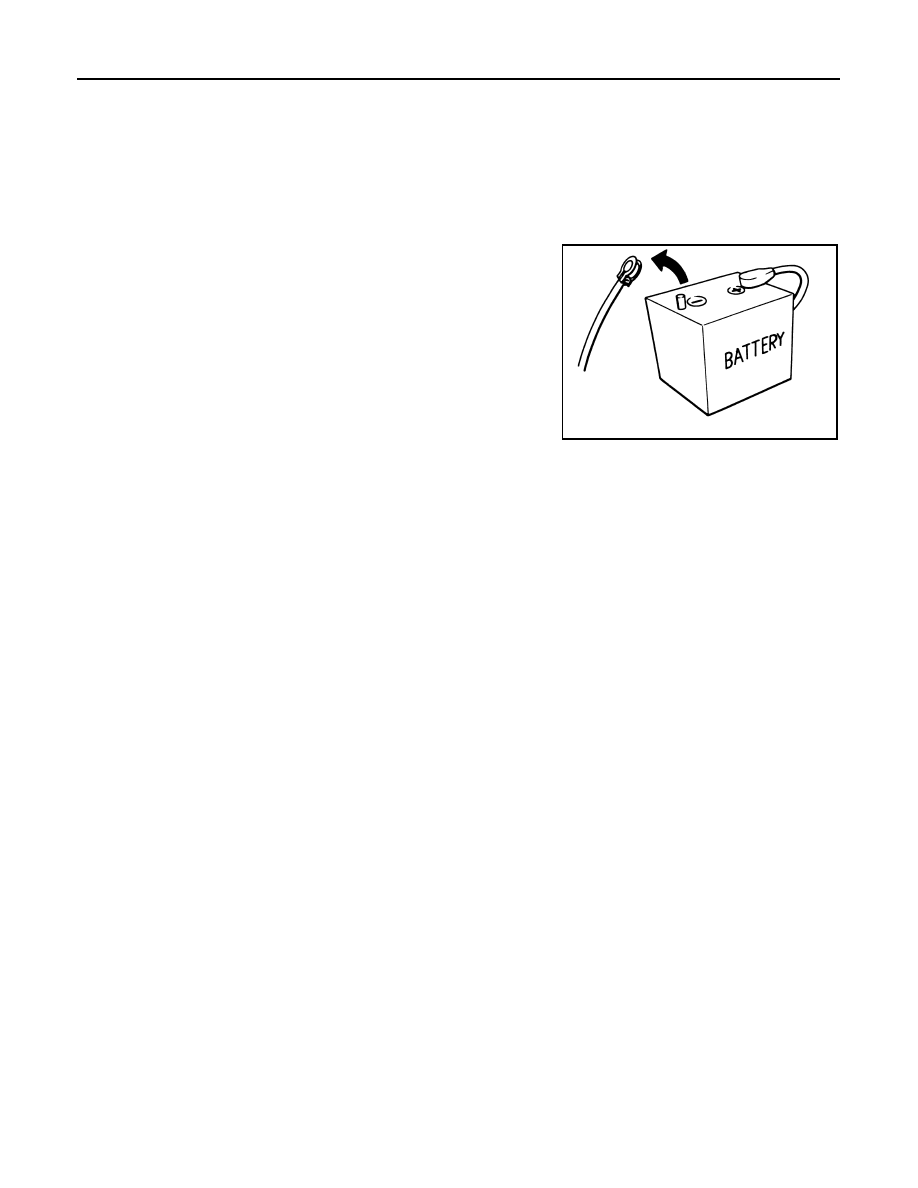Nissan Juke F15. Manual - part 649

EM-150
< PRECAUTION >
[MR EXCEPT FOR NISMO RS MODELS]
PRECAUTIONS
PRECAUTION
PRECAUTIONS
Precautions for Removing Battery Terminal
INFOID:0000000012958958
When disconnecting the battery terminal, pay attention to the following.
• Always use a 12V battery as power source.
• Never disconnect battery terminal while engine is running.
• When removing the 12V battery terminal, turn OFF the ignition
switch and wait at least 30 seconds.
• For vehicles with the engine listed below, remove the battery termi-
nal after a lapse of the specified time:
NOTE:
ECU may be active for several tens of seconds after the ignition switch is turned OFF. If the battery terminal
is removed before ECU stops, then a DTC detection error or ECU data corruption may occur.
• After high-load driving, if the vehicle is equipped with the V9X engine, turn the ignition switch OFF and wait
for at least 15 minutes to remove the battery terminal.
NOTE:
• Turbocharger cooling pump may operate in a few minutes after the ignition switch is turned OFF.
• Example of high-load driving
- Driving for 30 minutes or more at 140 km/h (86 MPH) or more.
- Driving for 30 minutes or more on a steep slope.
• For vehicles with the 2-batteries, be sure to connect the main battery and the sub battery before turning ON
the ignition switch.
NOTE:
If the ignition switch is turned ON with any one of the terminals of main battery and sub battery discon-
nected, then DTC may be detected.
• After installing the 12V battery, always check "Self Diagnosis Result" of all ECUs and erase DTC.
NOTE:
The removal of 12V battery may cause a DTC detection error.
Precaution for Supplemental Restraint System (SRS) "AIR BAG" and "SEAT BELT
PRE-TENSIONER"
INFOID:0000000012197326
The Supplemental Restraint System such as “AIR BAG” and “SEAT BELT PRE-TENSIONER”, used along
with a front seat belt, helps to reduce the risk or severity of injury to the driver and front passenger for certain
types of collision. This system includes seat belt switch inputs and dual stage front air bag modules. The SRS
system uses the seat belt switches to determine the front air bag deployment, and may only deploy one front
air bag, depending on the severity of a collision and whether the front occupants are belted or unbelted.
Information necessary to service the system safely is included in the “SRS AIR BAG” and “SEAT BELT” of this
Service Manual.
WARNING:
Always observe the following items for preventing accidental activation.
• To avoid rendering the SRS inoperative, which could increase the risk of personal injury or death in
the event of a collision that would result in air bag inflation, it is recommended that all maintenance
and repair be performed by an authorized NISSAN/INFINITI dealer.
• Improper repair, including incorrect removal and installation of the SRS, can lead to personal injury
caused by unintentional activation of the system. For removal of Spiral Cable and Air Bag Module,
see “SRS AIR BAG”.
D4D engine
: 20 minutes
YS23DDT
: 4 minutes
HRA2DDT
: 12 minutes
YS23DDTT
: 4 minutes
K9K engine
: 4 minutes
ZD30DDTi
: 60 seconds
M9R engine
: 4 minutes
ZD30DDTT
: 60 seconds
R9M engine
: 4 minutes
V9X engine
: 4 minutes
YD25DDTi
: 2 minutes
SEF289H